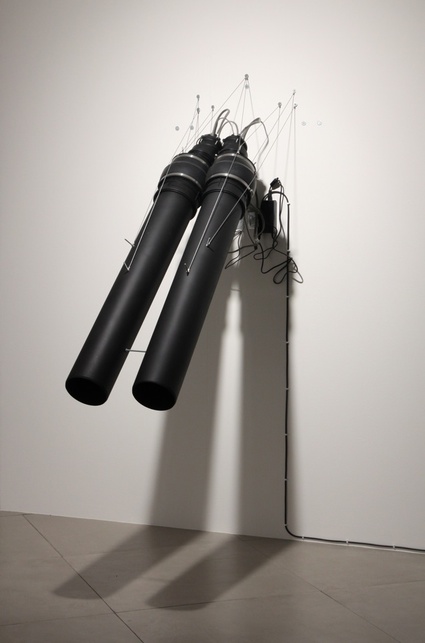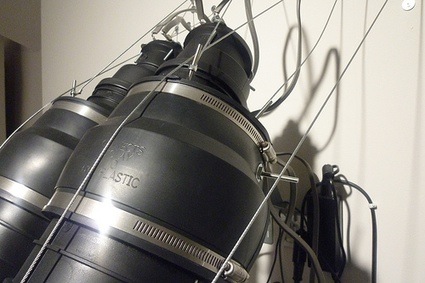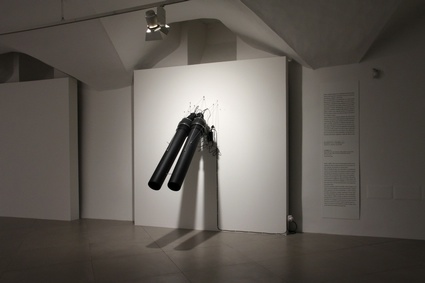Yesterday i spent a few hours in Florence to see Emerging Talents at Centre for Contemporary Culture Strozzina (CCCS). The exhibition brings the spotlight on 16 artists nominated to the 2011 Emerging Talents award, created by CCCS to identify, promote and support young Italian art.
 Alberto Tadiello, E13 000625, 2010. Exhibition view at Emerging Talents 2011,
Alberto Tadiello, E13 000625, 2010. Exhibition view at Emerging Talents 2011,
Centro di Cultura Contemporanea Strozzina, Firenze. Photo: Martino Margheri
The selected artists, aged between 25 and 35 years, are talented Italians whose work has found its way into galleries but has not yet won broad public recognition. I can’t applaud enough the initiative, there are plenty of young Italian contemporary artists and most of them don’t get half of the support they deserve.
The works on show are radically different from each other and i’ve discovered a few artists whose career i’m going to follow with much attention from now on. More about them soon. Today, i’m going to introduce the show with an artist many of you probably know.
A few years ago, Alberto Tadiello’s work started touring the blogs. The dysfunctional and elegant music boxes of his EPROM piece proved popular with both the media art and the contemporary art world. Quite an achievement in itself.
 Alberto Tadiello, E13 000625, 2010 (detail)
Alberto Tadiello, E13 000625, 2010 (detail)
The piece currently on view in Florence is directly inspired by early prototypes of sound weapons. As the artist explained to Italian mag arte e critica: I found a series of very suggestive images of some real “sound armies” set up by the Japanese army during the Second World War. They were like guns pointing to the sky, conceived for shooting down planes by using particular airwaves. Unlike current acoustic weapons, which are real weapons, those first prototypes have never been activated. Those images fascinated me a lot. This work probably still recalls these suggestions. It is a structure that juts out a lot from the wall, overhanging and conveying a sort of dangerousness. It produces a deep guttural sound and can be “exhibited” in every sense, both from a spatial and a sound viewpoint. It is fixed to and hanging on the wall and sound becomes a physical presence in movement able to sculpt the space.
Tadiello’s version of the weapon looks down, it is dark, sleek, mysterious and looks like a commercial device (its name actually refers to an identification code for car horns.)
The “deep guttural sound is triggered by visitors as they draw near the sculpture. Just like the disconcerting noise of the Japanese weapons was engineered to unsettle the enemy, the sound of Tadiello’s sculpture hits the visitor in the stomach, becoming a physical presence that shapes the space. Unfortunately or fortunately for me, the installation had been turned off yesterday afternoon which tells you how troubling the sound must have been for the employees who spend the whole day surveying the gallery.
 Alberto Tadiello, E13 000625, 2010. Exhibition view at Emerging Talents 2011,
Alberto Tadiello, E13 000625, 2010. Exhibition view at Emerging Talents 2011,
Centro di Cultura Contemporanea Strozzina, Firenze. Photo: Martino Margheri
Emerging Talents remains open until May 1, 2011 at Centre for Contemporary Culture Strozzina (CCCS), Florence.
Credit image on the homepage: Alberto Tadiello, E13 000625, 2010. Electric horns, pipes, cables, transformers, metal brackets, steel tie-rods, 60 x 150 x 110 cm. Courtesy T293, Naples.
